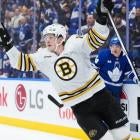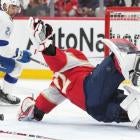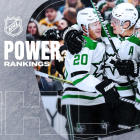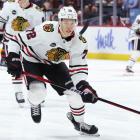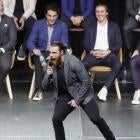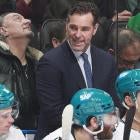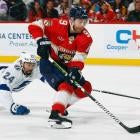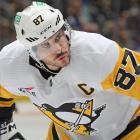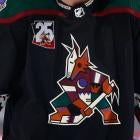Team USA unveiled its roster for the 2016 World Cup of Hockey Friday night and there were not just a few, but many head-scratching decisions. Instead of building a team that went big on speed and puck-movers, like the kinds of teams that win international tournaments, USA went with the top-six, bottom-six format leaving some of their most skilled players on the sidelines.
Among the most notable omissions, Phil Kessel who is leading the Penguins into the Stanley Cup Final with nine goals and 15 points and is among the best American goal scorers in the NHL today. He was also Team USA's best forward at the 2014 Olympics, which if you can believe it, was only two years ago.
So let's take a look at how Team USA filled this roster out (new additions denoted with an asterisk):
Forwards: Justin Abdelkader, David Backes*, Ryan Callahan*, Brandon Dubinsky*, Patrick Kane, Ryan Kesler, T.J. Oshie, Max Pacioretty, Zach Parise, Joe Pavelski, Derek Stepan, James van Riemsdyk*, Blake Wheeler.
Defensemen: Dustin Byfuglien, John Carlson, Erik Johnson*, Jack Johnson*, Matt Niskanen*, Ryan Suter
Goalies: Ben Bishop, Jonathan Quick, Cory Schneider
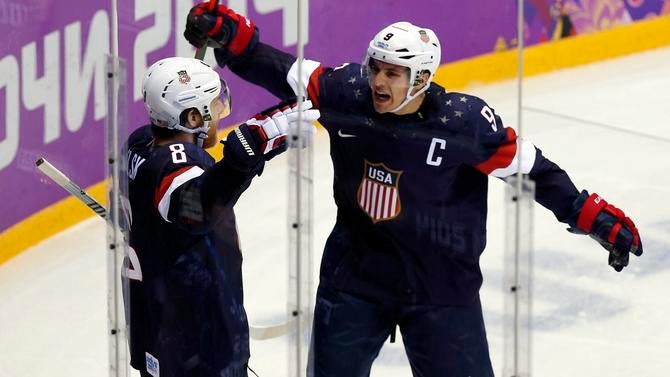
The first 16 players named to the roster were all guys that looked very much like World Cup caliber players. However, their addition of Justin Abdelkader for the first 16 should have been an indication as the kind of team they were building because they added about four more players like him.
They wanted grinders to fill roles. However, after they filled those roles, they decided to add an entire other line of role players instead of adding more offensive firepower. Perhaps it's an over-correction since they know they probably won't be able to match Canada skill for skill.
Goaltending should be the strength of this roster with three outstanding netminders, but goal-scoring is another story.
So let's take a look at some of the things you need to know about Team USA:
1. The most glaring omissions from this roster: Phil Kessel is a massive surprise, given his performance in the postseason and his improved play since the first 16 players were named to the roster. He's got a boatload of international experience including two Olympics and this recent run to the Stanley Cup seemingly should have put him over the top. You could take out any of the bottom six forwards and have a better option in Kessel as the U.S. seems committed to going with only two scoring lines and two checking lines. You can't have enough goals in your lineup and they're leaving one of the best shooters in the game today out of the mix.
The only explanation is that they don't think Kessel is the right fit for this team when it comes to chemistry. Based on the other players they took instead, Kessel wouldn't have fit in with the identity they're trying to create. But he still possesses the skill that helps you win games and very well could help the Penguins win the Stanley Cup this year. You have to talk yourself out of a player like that.
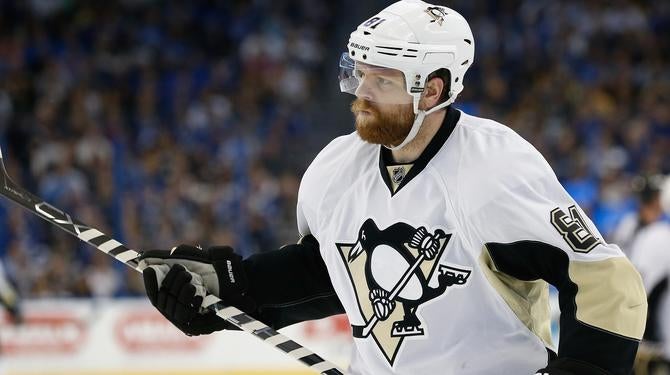
Justin Faulk, to me, might even be even more glaring than Kessel, given how Kessel seems to be viewed by the old-school hockey types. Faulk is one of the top young defensemen in the NHL today, made the roster for the Olympic team and didn't get much of a chance to play. With Carolina, he has been deadly on the power play and for the last three years has been a positive possession player on poor teams. He can play big minutes and gives you a point-producer and a true defender all wrapped in one.
Other forwards of note among the snubs: Tyler Johnson, who was hobbled by injuries before having a great performance for the Lightning during the playoffs, is another player that brings production and speed to the lineup. He's also got the tenacity that fits into this team's identity. Kyle Okposo, who has more power elements in his game has been among the most productive Americans in the NHL, also looked like a good option. Paul Stastny had a really strong second half for the Blues and was very good in a shutdown role during the playoffs. Bobby Ryan's not really a surprise to be left off, but he had a great year in Ottawa.
On defense, aside from Faulk, Olympians Kevin Shattenkirk and Cam Fowler are among the notable players passed over. Keith Yandle looked like he might have a shot at the team based on his puck-moving capabilities as well. Nick Leddy, who has been shining for the Islanders on their top pairing, is another good example of a guy who has the skill set that helps teams win in today's NHL. Shattenkirk in particular is the biggest surprise among these guys. He's good for 40-plus points a year and had a decent showing at the Olympics in 2014.
2. This is a team built in the mold of their head coach: It was pretty clear that Team USA GM Dean Lombardi wanted this team to have a defined identity. That started when they hired John Tortorella as head coach and it looks like they may have taken his lead on a few players.
Former or current Tortorella players added to the roster included Brandon Dubinsky, Ryan Callahan and Jack Johnson. Derek Stepan and Ryan McDonagh were already on the team, but they are also former players.
Tortorella preaches more defensive styles, blocking shots, playing a physical game. This team can do that as constructed, but it is a very, very dangerous game to play when facing the skill of teams like Canada, Finland, Russia, Sweden and even the young Team North America. Can this U.S. team keep up? The only way they can is if they slow everyone else down. That's tough to do at this level.
3. The most surprising additions: Whenever you see a best-on-best tournament, you expect the teams to bring most of their best players. As we noted, USA is leaving some of their best players home, or some are not eligible to play for the U.S. due to being 23 or under and playing for Team North America. On paper, this team looks like it's going to have a hard time stacking up to the other power teams.
The surprises started months ago when Justin Abdelkader was named to the team as one of the first 16 players. An energy forward who's lighter on skill, his inclusion was the first indication that the U.S. was going big on grit. I don't think anyone would have predicted they'd go this big, though.
Adding Dubinsky and Callahan on top of already having Abdelkader was a bit of a surprise, but probably shouldn't have been considering the way it seems they want this team to play.
James van Riemsdyk was somewhat surprising as an add more because he was injured almost the entire season. When healthy, he absolutely belongs in this mix and is a good character guy on top of being good offensively. We'll just have to see how he does after missing so much time, especially when other players made a great case for inclusion this year.
Jack Johnson was an easy omission from the Olympic team in 2014 despite the fact that he's beloved by the U.S. decision makers. There wasn't a spot for him then for good reason, and those reasons haven't changed beyond his head coach knows him now. He had a decent bounce-back year in 2014-15 with 40 points, but this season was nightmarish for both him and the Blue Jackets. He appeared in 60 games and had only 14 points. Meanwhile, his puck possession numbers were poor, as they have been throughout his career. It's hard to justify this one on any level. Justin Faulk seems more like the player USA's management team thinks Jack Johnson is.
4. Will it work? In an era where puck possession and speed have become the hallmarks of winning teams in the NHL, Team USA went with the hallmarks of the mid-1990s through the early 2000s. Grit and grind won games before, but if that's what you're hanging your hat on now, you're risking being left in the dust.
That said, the one thing about short tournaments is that you only need things to go right for you for two weeks. It's not like in an 82-game regular season or the two-month odyssey that is the Stanley Cup Playoffs. If you have a plan, you stick to it and you execute it perfectly for two full weeks, you have a chance to win. Not only that, but USA does have the goaltending to carry them to wins with any of Quick, Bishop or Schneider being capable as a No. 1.
This is a team full of NHL players, guys that play big roles on their respective teams. Almost all of them are first, second or third-line players. They're not going to go in there and get killed. But by leaving off two or three more skill players, the margin for error is so slim because they're leaving a lot of goal scoring talent on the sidelines. The top six is very, very good with scorers like Patrick Kane, Blake Wheeler, Max Pacioretty and Joe Pavelski. Now imagine if they had a third line with guys like that, too.
The other thing about this USA roster is that if they're going to have any hope of winning, they're going to be excruciating to watch. Two lines loaded up with players that have more of a grinding style to go against other teams' top lines doesn't leave a lot of time for USA's scoring players to shine. They have no choice but to bottle up the opposition and pick their spots offensively instead of being an attacking team. That's not a lot of fun.
If you're a USA fan, you obviously should still cheer for your team and hope for a win. But if you're looking for entertainment, Team North America might have more to offer for you in that department.














